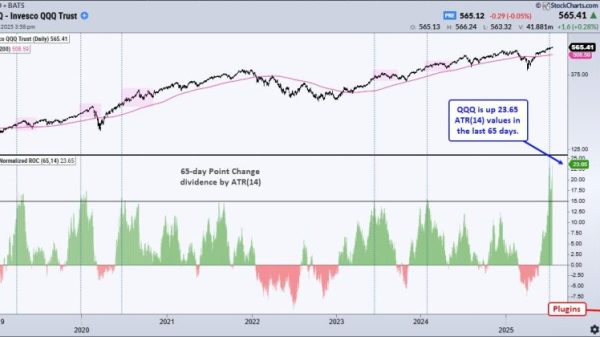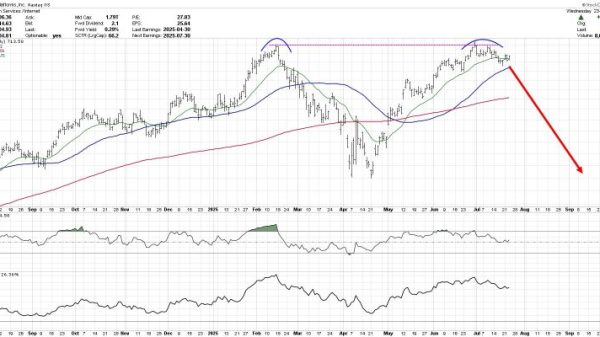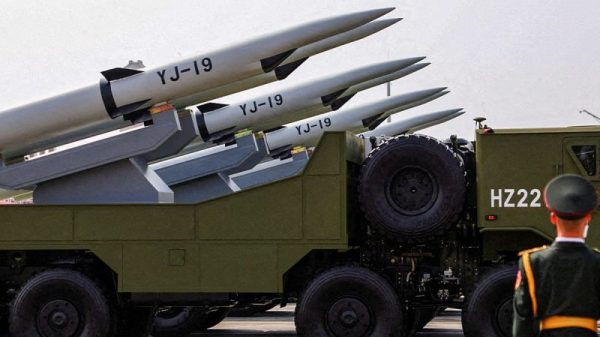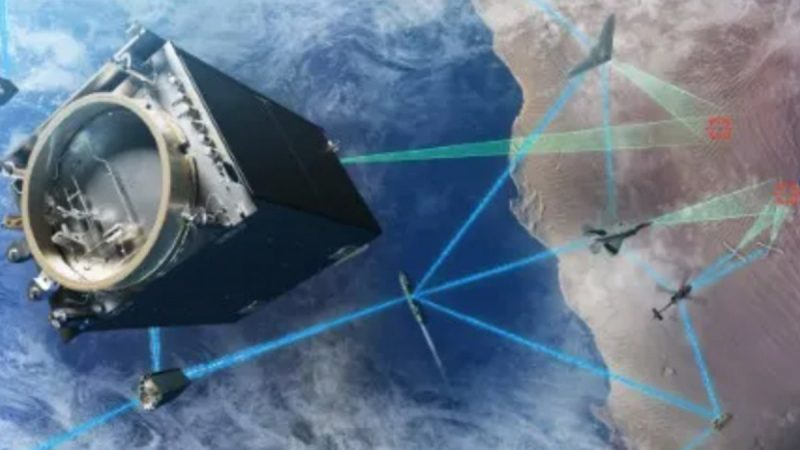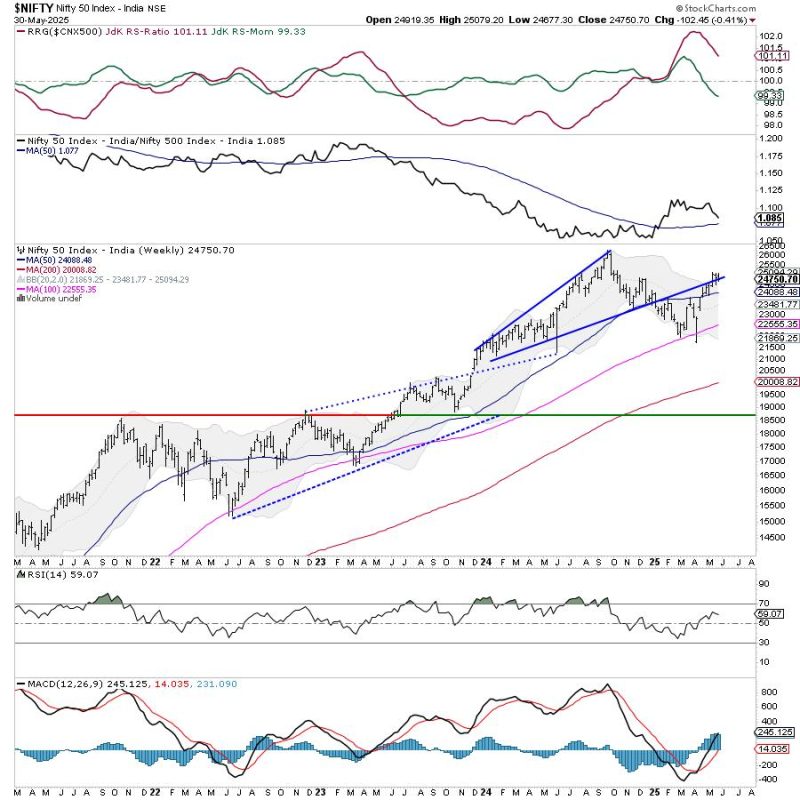Lockheed Martin is designing a space-based missile interceptor and aims to test the technology for potential integration into President Donald Trump’s ‘Golden Dome’ defense shield within the next three years.
The defense contractor revealed this week that it hopes to test a satellite defensive weapon capable of destroying hypersonic missiles by 2028.
If successful, this would mark the first time in history the United States has deployed interceptors in space to destroy enemy missiles before they reach the homeland. Lockheed is still weighing different technologies, ranging from lasers to kinetic satellites that could maneuver and strike high-speed targets in flight.
‘We have missile warning and tracking satellites made by Lockheed Martin in orbit today that provide timely detection and warning of missile threats,’ said Amanda Pound, mission strategy and advanced capabilities director at Lockheed Martin Space, told Fox News Digital.
‘We are committed to making space-based interceptors for missile defense a reality, leveraging our decades of experience, investments, and industry partnerships, to be ready for on orbit testing in 2028.’
Lockheed’s space interceptor project directly supports Trump’s ‘Golden Dome for America’ initiative, first unveiled in May 2025. The ambitious missile defense concept calls for a global constellation of satellites armed with sensors and interceptors, designed to detect, track and eliminate advanced missile threats – including hypersonic and ballistic weapons – before they can strike U.S. soil.
The idea echoes President Ronald Reagan’s 1983 Strategic Defense Initiative, often dubbed ‘Star Wars,’ which was dismissed at the time as science fiction. But today, the technologies once seen as far-fetched are rapidly advancing, according to defense leaders.
Gen. Michael Guetlein, appointed by the Trump administration to head Golden Dome, emphasized that key components of the system already exist, expressing confidence in achieving a test-ready platform by 2028. Still, it’s no easy feat.
‘Intercepting a missile in orbit is a pretty wicked hard problem physics‑wise,’ said Jeff Schrader, vice president of Lockheed’s space division. ‘But not impossible,’ he added, noting breakthroughs in maneuverability and guidance systems.
Analysts caution that to make the Golden Dome vision a reality, the U.S. may need to launch thousands of interceptors into orbit. Some have compared it to the Cold War–era ‘Brilliant Pebbles’ program, which proposed a similar space-based missile shield but was eventually shelved due to skyrocketing costs and technical hurdles.
Golden Dome is currently projected to cost $175 billion, with $25 billion already approved by Congress. But long-term estimates range anywhere from $161 billion to over $830 billion over two decades – raising questions about the program’s affordability and long-term sustainability.
Meanwhile, Lockheed is bolstering ground-based missile defense systems to complement the orbital layer. In March 2025, the company’s Aegis Combat System aboard the USS Pinckney successfully simulated the interception of hypersonic medium-range missiles during the FTX-40 exercise, codenamed Stellar Banshee.
The company is also advancing infrared seeker technology for interceptors, which would enhance the tracking and targeting of fast-moving missiles in their terminal phase.
Lockheed remains a central player in the Pentagon’s broader missile defense and hypersonic weapons development effort. It is the prime contractor for the Next Generation Interceptor (NGI), which is targeting an initial operating capability by the end of fiscal year 2028.
Simultaneously, the company is fulfilling Navy contracts for its Conventional Prompt Strike (CPS) hypersonic weapons system. Sea-based deployment of CPS is expected to begin between 2027 and 2028.
President Trump has publicly stated he wants Golden Dome operational by the end of his term. But industry officials warn that supply chain limitations and the Pentagon’s slow-moving procurement system make full deployment by 2029 unlikely.











